Ok…so maybe my title is a little ambitious. However, this summer we have been able to catch wild bees on two different occasions!
The first hive we were able to catch came out of a tree in a friend’s yard. The bees had been there for quite some time, but the landlord said he was going to exterminate them, so they asked if I wanted to take them first.
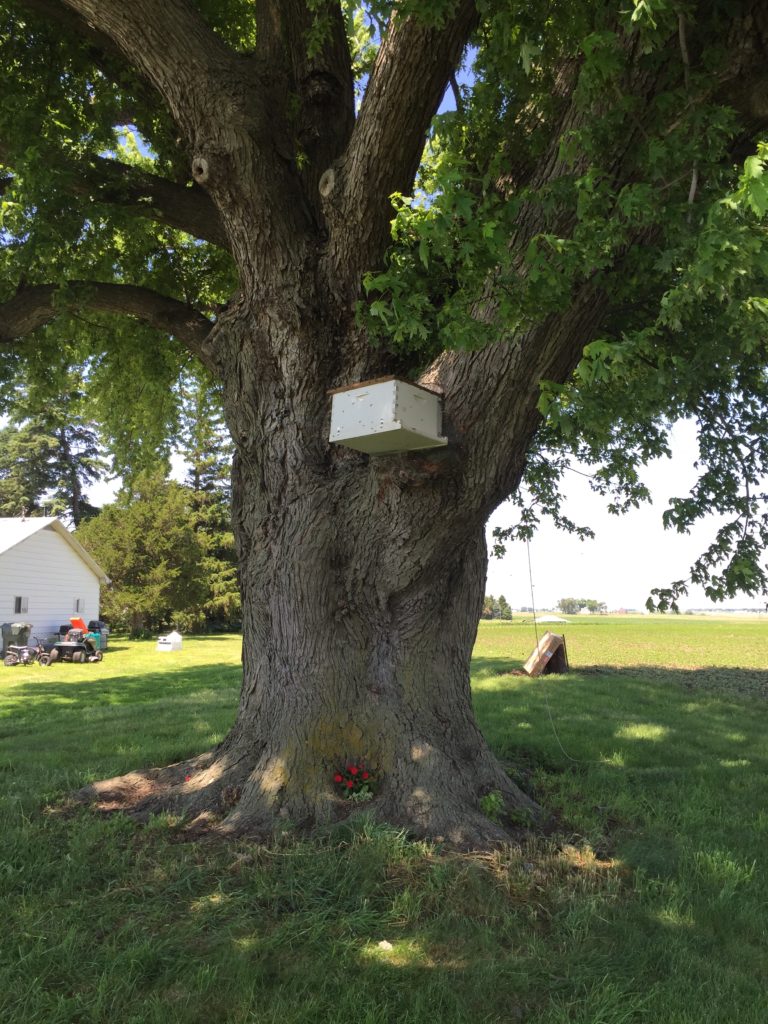
Trying to trap bees into a hive.
I went over and placed a box over the hole in the tree, hoping they would move into the box and lay some brood in there. Unfortunately, after three weeks or so, they were showing no intention of doing so, so I decided to do a cut-out. I had to use a chain saw to open up the whole. I then used a home made bee vac to suck as many of the honey bees out as I could. I got about two thirds of a five gallon bucket full. After I got as many bees out as I thought I could, I began to cut out sheets of comb that I would later mount in my langstroth hive. This would serve two purposes. The first was to get the bees to stay in the hive after they had been moved. I didn’t want them getting too irritated and running off. Bringing some of their old home to their new home increased their chances of staying. The second reason was to ensure that I would have a queen. Since I was only able to capture a fraction of the bees out of the tree, (the hole was so deep that there was no way to get to the rest) I knew that it was possible that I would not get the queen bee. A queen bee is absolutely necessary for a hive to survive because she is the only one that has new baby bees. Taking some of the old brood comb out of the tree hive meant that if I accidentally killed or failed to capture the queen that the bees could make themselves a new one in their new home.
Three hours, six stings, and a lot of sweat later, I arrived home with my first wild hive.
I mounted the comb in my frames using rubber bands and inserted it along with all the captured (and very upset bees) into their new hive.
Over the next week I checked them often to see if I could find the queen–no dice.
However, I did notice that the bees were beginning to build an emergency queen cell on some of the old comb!
I decided I had better give them plenty of space to complete the delicate task of making a new queen so I left the hive alone for a couple of weeks; long enough for the queen to emerge, go on her mating flight and come back to start to produce new brood. Sure enough, when I next checked the hive I did not see a queen but there was brand new larvae in cells! The hive was well on its way to making me honey!
The second chance came yesterday when I was over at dad’s helping him replace a fan belt on the semi-tractor. My bee friend called and asked if I had any empty hives because someone had just called him and said that they had a swarm in their front yard!
August is a bad time of year to catch a swarm of honey bees, but we thought we should try it anyway. I did not have an empty hive available, but I called another bee-keeping friend and he had one he was willing to lend me, so we went to capture the swarm.
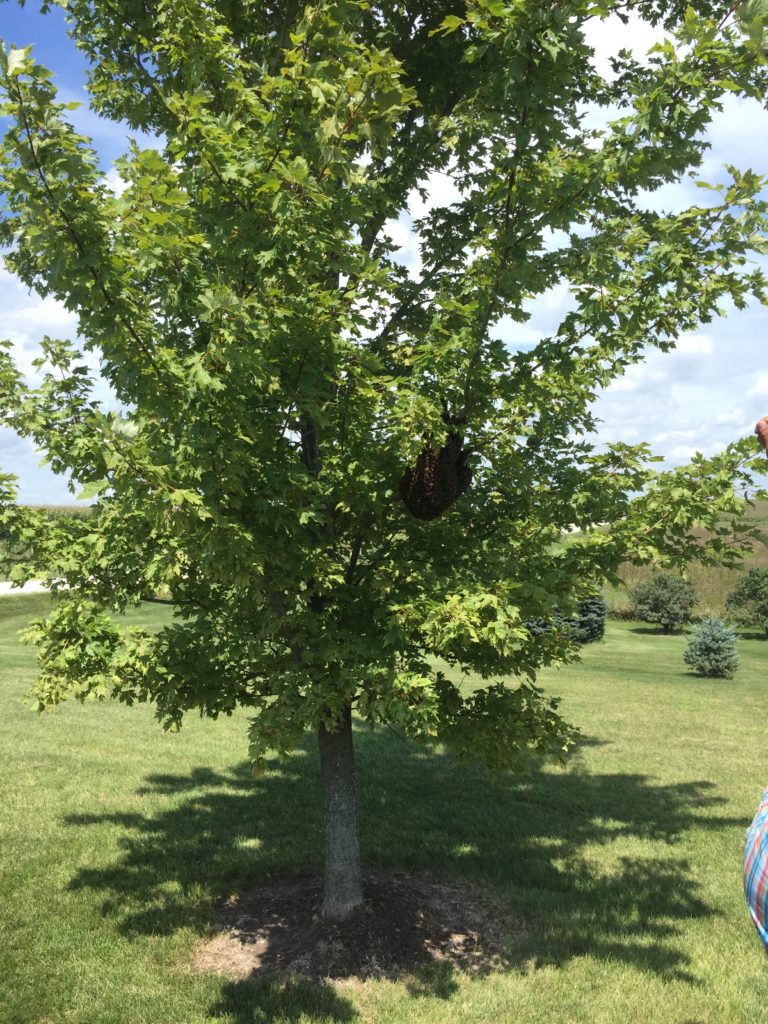
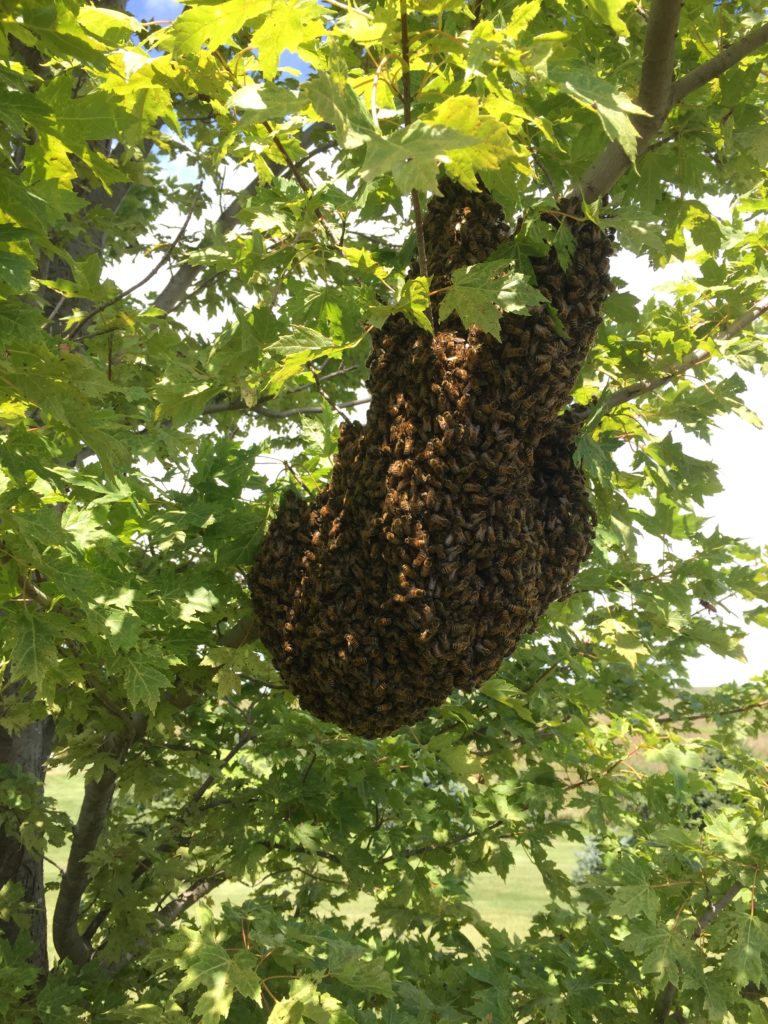
Swarm of wild honey bees
When we got to the place we found the swarm and luckily it was only about six feet off the ground. My friend held up a special box he has for capturing swarms and I shook the branch. Poof! With the exception of just a couple dozen bees, they all fell right in.
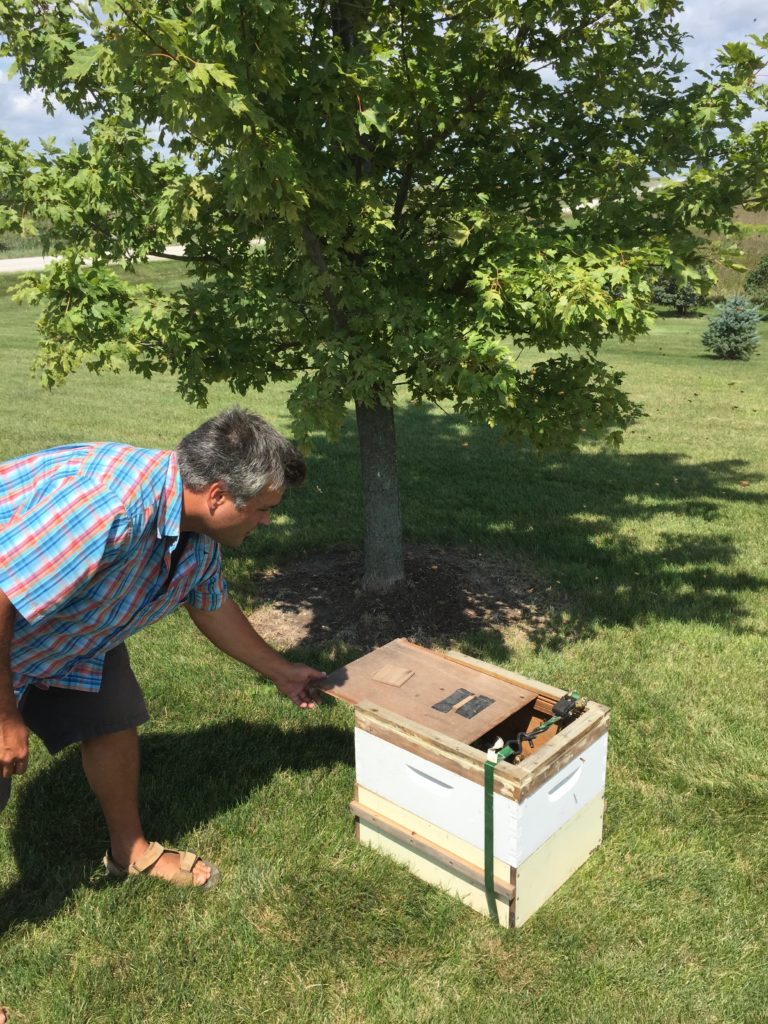
We sat the box down for a bit with an open lid so the bees remaining outside would fly in to find the queen. Sure enough, after about a minute we had captured all but a few. We picked up the box and stuck it in the back of the pickup. The bees were off to our place to their new home.
When I got back home I cleaned and assembled the borrowed hive and sat it on top of the catch box. I also added a few drops of lemon grass oil to the tops of the frames to appeal to the bees and get them to want to settle there.
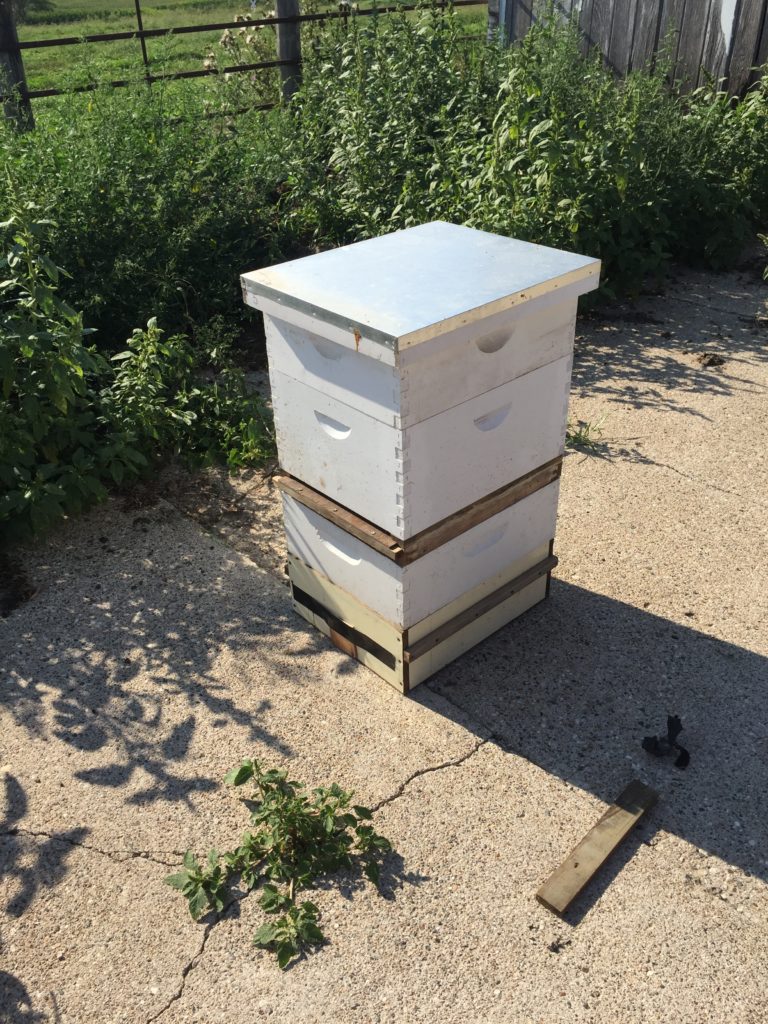
I then pulled out the trap door and allowed the bees up into their new hive.
Since it is so late in the year, I will need to feed the bees till winter. An upside down five gallon bucket with some small strategically placed holes works great!
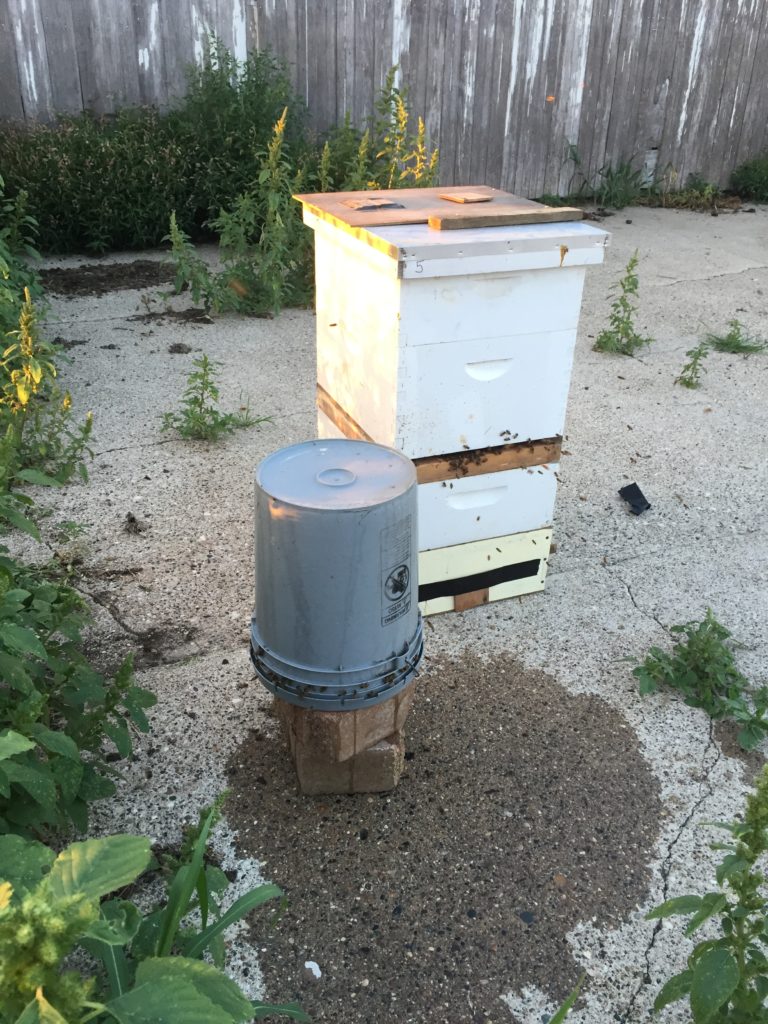
So far the bees seem to be happy with their new home. Our hope is that they will like this place and stay on here as honey producers for next summer!

Leave a Reply